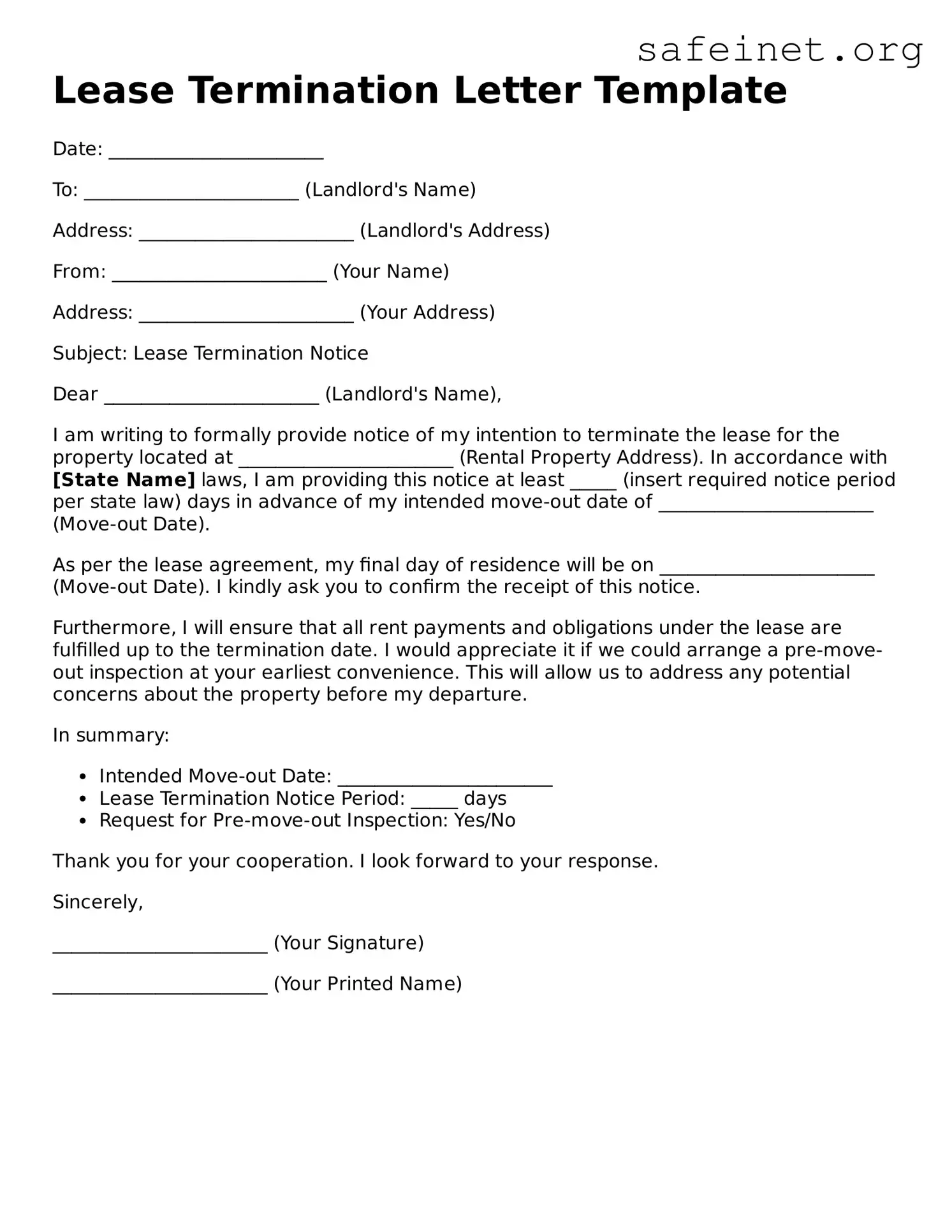What is a Lease Termination Letter?
A Lease Termination Letter is a formal document used by tenants or landlords to notify the other party that they intend to end a rental agreement. This letter serves as a record of the intention to terminate the lease and outlines important details, like the effective date of termination and the reasons for leaving, if necessary.
Who should use a Lease Termination Letter?
Both tenants and landlords can use a Lease Termination Letter. Tenants may submit it when they choose to end their lease early or at the lease's conclusion. Landlords may use the letter to notify tenants of the intent to terminate the renting arrangement, particularly if there are issues that need addressing.
When should I submit a Lease Termination Letter?
The timing of the submission is crucial. Typically, the letter should be sent at least 30 days before the intended move-out date, but you should consult your lease agreement for specific requirements. This notice period can vary based on local laws and the terms of your lease.
What information should be included in the Lease Termination Letter?
The Lease Termination Letter should include essential information, such as your name and address, the property address, the effective date of termination, any reasons for the termination, and your contact information. Clearly stating these details helps ensure both parties are on the same page.
How do I deliver the Lease Termination Letter?
Delivery methods for the Lease Termination Letter can vary, but it’s vital to keep a record. Hand-delivering the letter can be effective if both parties are available. Alternatively, you may choose to send it via certified mail, providing proof of delivery. Emailing can also be an option if it is acceptable per your lease agreement.
What happens after I submit the Lease Termination Letter?
Once the letter is submitted, the landlord or tenant should acknowledge receipt. Afterward, the moving-out process can begin. It is also a good idea to discuss the return of the security deposit and any final inspections that may be required.
Can I change my mind after submitting a Lease Termination Letter?
Changing your mind after submitting the letter can be complicated. It's important to communicate as soon as possible with the other party. Depending on the circumstances and the terms of the lease, a mutual agreement may allow for the lease to remain in effect.
What if there is a dispute regarding the Lease Termination Letter?
If a dispute arises, it's essential to review the lease agreement and any local rental laws that apply. Open communication can often resolve misunderstandings. If needed, seeking legal advice may provide further clarification and options for resolution.
Do I need a lawyer to create a Lease Termination Letter?
While legal assistance is not required to create a Lease Termination Letter, it is highly recommended to ensure clarity and compliance with local laws. A well-prepared letter can prevent potential disputes and misunderstandings, making the process smoother for both parties.
